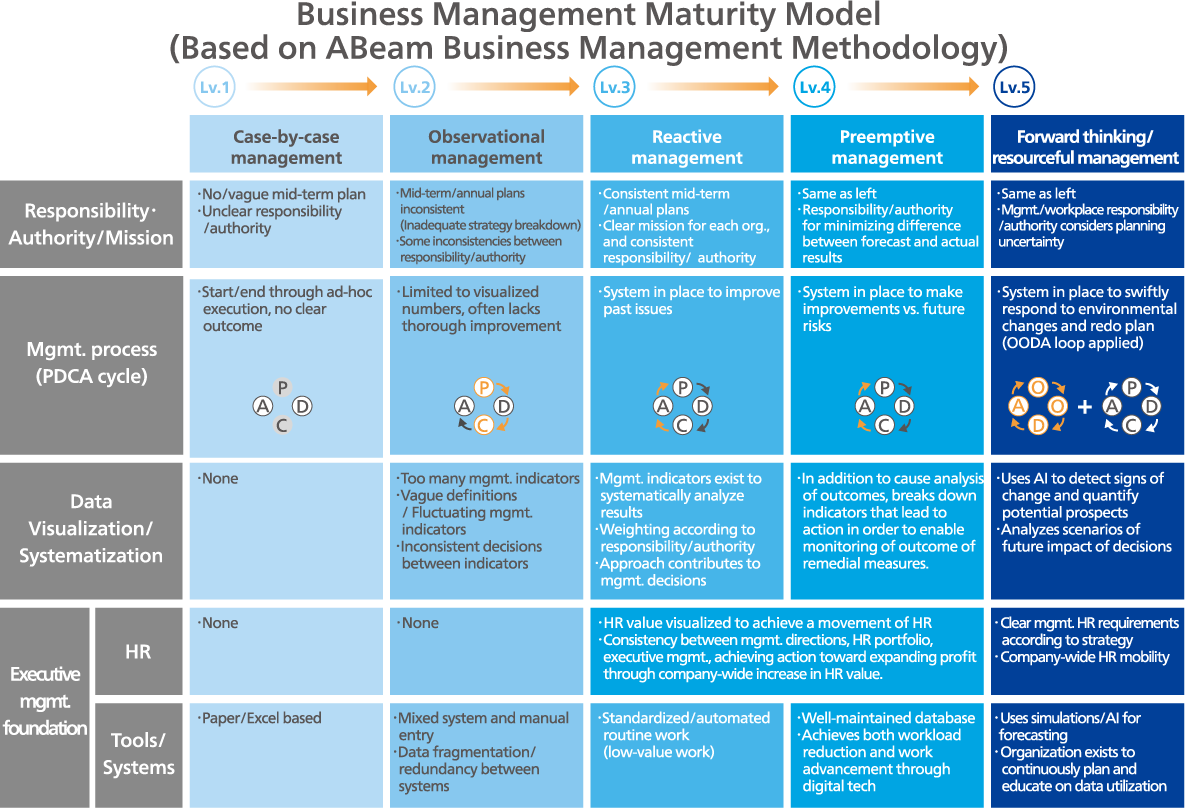Given the drastic changes in the current environment, data-driven business management helps companies achieve more sophisticated management, but past habits often serve as barriers that impede growth in maturity. Accordingly, the leadership team in charge of management (an organization comprising the members of the executive committee who make DX decisions) must take the lead in initiatives to achieve that maturity.
This section breaks down the important points from level 3 and beyond.
At Level 3, Reactive Management, decision making according to an objective, data based response policy becomes important. Normally, the ideal situation is that the data has been structured to allow drilling down, and the causes and appropriate measures thereof are analyzed based on the actual numbers.
However, in reality, after looking at the data, decision making is still based on experience and intuition instead. In fact, analysis of the data is commonly thrown in after the fact to rationalize the assumed causes and measures, resulting in an inability to achieve the expected outcomes. Accordingly, it is essential for the leadership team to make thorough use of the data.
At Level 4: Preemptive Management, the aim becomes taking measures in preparation for future risks to achieve improvements in addition to analyzing causes from the actual performance data. The results of those measures are then monitored and reviewed to improve the effectiveness of subsequent measures.
Unfortunately, analysis of the performance data, based primarily on financial indicators, and the data on the outcomes of measures, does not automatically break down into indicators that lead to action. Actionable measures cannot be found without planning based on KPI. At this level, the leadership team is expected to take on a coaching approach.
At Level 5: Forward Thinking/Resourceful Management, the aim is to dynamically modify the very directions of measures in order to respond flexibly to environmental changes. By identifying future trends through the additional use of non-financial and non-structured data, it becomes possible to review what needs to be done in addition to how it needs to be done.
However, there are still many cases at this level that only go so far as scenario analysis using AI. Because the company overall is managed according to a yearly budget cycle, there are internal barriers to restructuring the budget during the year. As a result, many companies fail to take the additional step of appropriately reviewing the plan itself. The only way that can be achieved is through bold decision making on the part of the leadership team.
As shown above, the achievement of data-driven business management depends more on user capability and desire for transformation and consensus building within the company, rather than on systems or technology. Accordingly, it is important for the leadership team that leads data-driven management to have a unified awareness of data utilization and a method to promote ingenuity. To achieve sophisticated, data-driven business management, the leadership team should ideally work together through a single monolithic policy.



